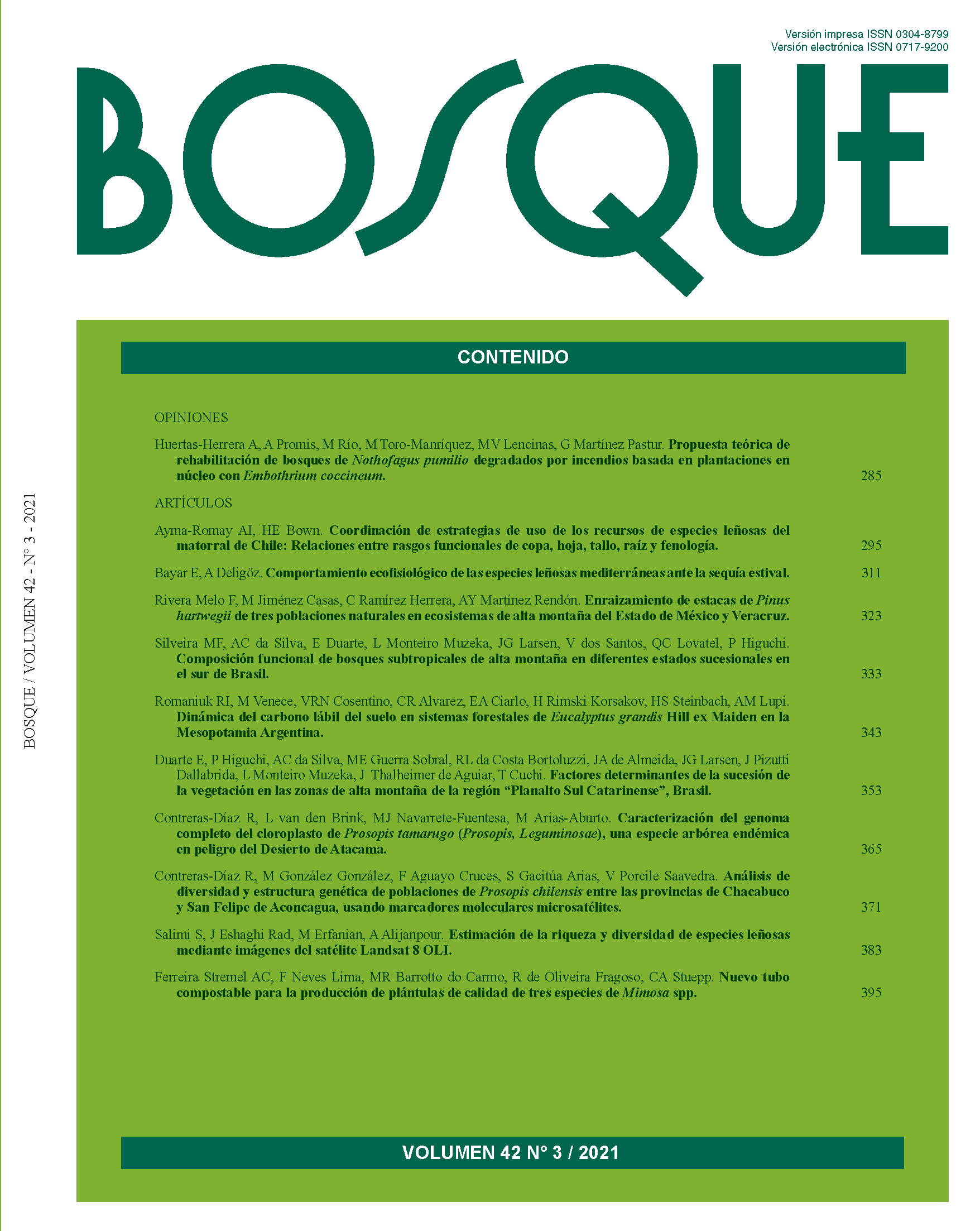New compostable tubes for the production of high quality seedlings of three species of Mimosa spp
Main Article Content
Abstract
Obtaining high-quality native species seedlings and sustainable alternatives for seedling production are currently some of the bottlenecks for successful restoration plantings in degraded ecosystems. This study evaluated the survival and vigor of seminal seedlings of Mimosa flocculosa, M. micropteris and M. incana, produced in three containers (110 cm3 and 55 cm3 polypropylene tubes and 58 cm3 SISBGC type biocompostable container) for ecological restoration purposes in the phytogeographic region of Mixed Ombrophilous Forest. Survival, total height, stem diameter, shoot and root dry biomass, sturdiness quotient, Dickson’s quality index and technical efficiency were evaluated. Survival percentages were higher for the three Mimosa species throughout all evaluations and in the three containers, with an average over 95 %, demonstrating the viability of the seedling production protocol used. Although the 110 cm3 tube favored larger seedling growth, especially in M. flocculosa, the SISBGC tube showed similar efficiency for M. micropteris and M. incana. We conclude that a good performance in the nursery, associated with the bio-decomposition characteristics, makes SISBGC an excellent alternative for producing native seedlings for ecological restoration purposes.

